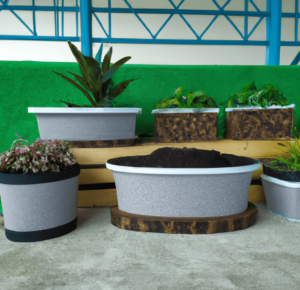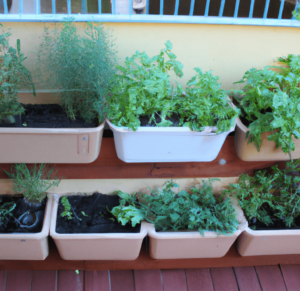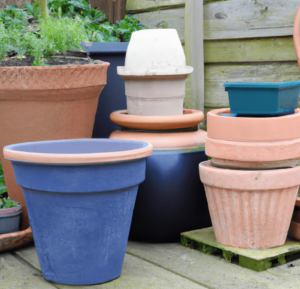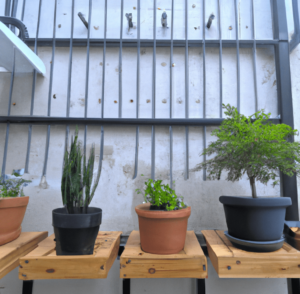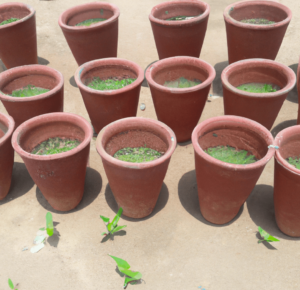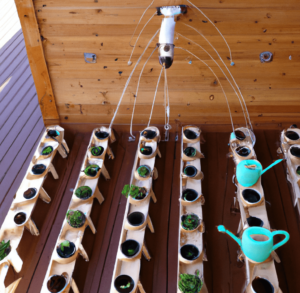Gardening can be enjoyable, but it also takes a lot of time and work to keep the plants healthy and growing. Watering your plants is one of the most important gardening tasks, but it can be difficult to keep up with their needs, especially in hot, dry weather. Fortunately, self-watering pots can make watering your plants easier while also offering a host of advantages for your yard. When you’re using planters to bring life to a small space, you definitely need to look into the benefits of using self-watering planters in your garden.
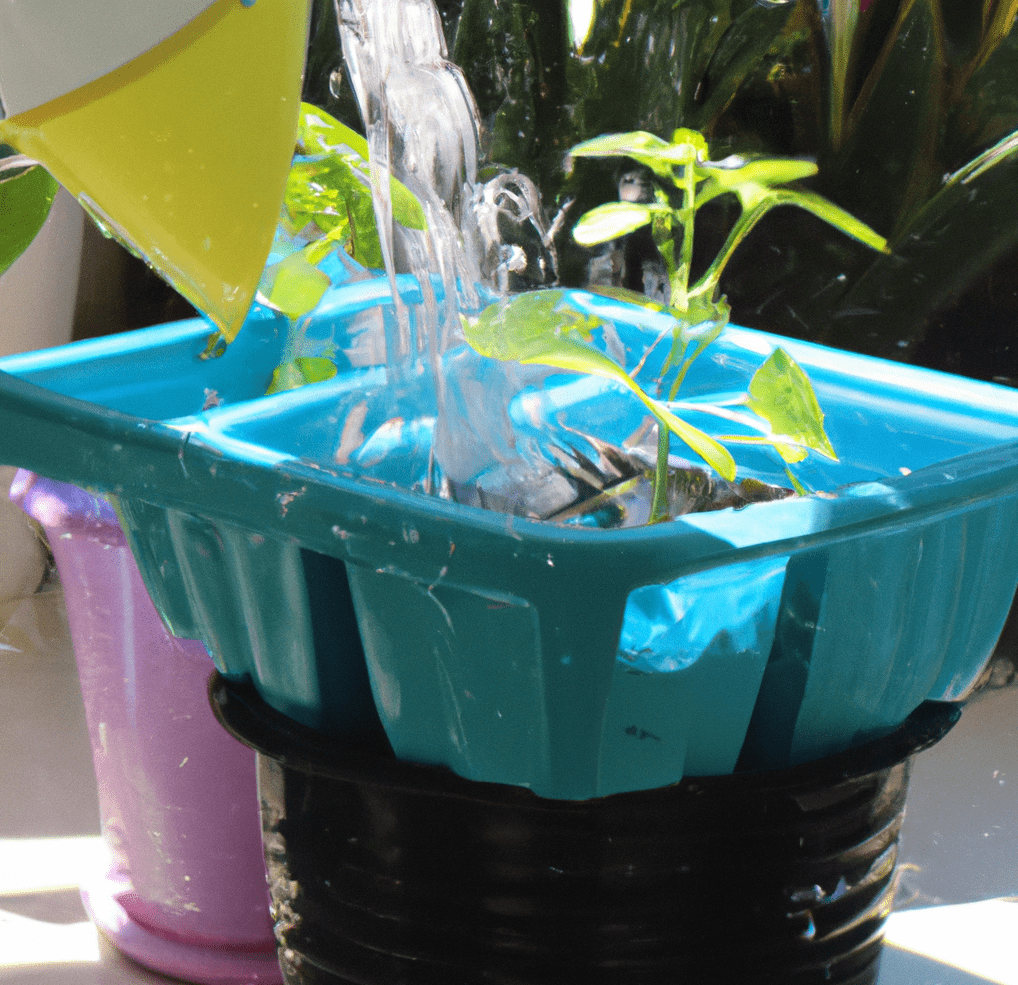
How Self-Watering Planters Work
After learning about, understanding, and using different types of potting soil in planters, you may want to look into an easy fix for the frequent issues of overwatering or underwatering plants in a yard: self-watering planters These planters function by using a reservoir that holds water beneath the soil. The water is subsequently absorbed by the plants via a wick or other porous material. To keep the plants hydrated as the soil in the planter dries out, the wick or porous substance takes water from the reservoir.
Without the need for frequent manual watering, this technique makes sure that the plants get the proper amount of water for optimum growth. The fact that self-watering planters reduce water waste is one of the benefits of using self-watering planters in your garden. As the water is kept in the reservoir, it reduces moisture loss through evaporation and runoff, which happens frequently with conventional watering techniques. Additionally, these planters can be used in a variety of locations, including patios, balconies, and indoor and outdoor gardens. They are a flexible solution for any garden enthusiast because they come in a variety of sizes and designs.
The Basic Mechanics of How Self-Watering Planters Function, Including the Use of a Water Reservoir and Wicking System
To learn about the benefits of using self-watering planters in your garden, you need to know how they work:
- Self-watering planters are creative gardening solutions that assist in preserving the ideal moisture level for plant roots without the requirement for continuous watering. A water reservoir and a wicking system are the two main parts of a self-watering planter’s mechanism.
- The planter’s base, which holds water, is called the water reservoir. A wick or a group of wicks that run from the water reservoir to the plant’s root system make up the wicking system. The plant may take up water as needed since these wicks serve as a conduit between the water reservoir and the soil.
- The wick or wicks draw water from the reservoir to the soil when the planter’s soil becomes dry. As a result, even when you aren’t around to water the plant, the roots get the moisture they need to survive. Periodically check the reservoir’s water level and top it out as necessary.
- Overwatering can be avoided with the aid of the wicking system. Excess water cannot build up in the soil and cause root rot or other issues because the plant roots can only collect water from the wick.
For people who are new to gardening or have busy schedules that make it difficult to water plants regularly, self-watering pots are a great solution. The benefits of using self-watering planters in your garden include that these planters are appropriate for both indoor and outdoor use because they come in a range of sizes and designs. You can enjoy beautiful, healthy plants without the stress of worrying about their watering requirements when you use a self-watering planter.
The Advantages of This Type of Watering System Over Traditional Methods
Drip irrigation is a very effective gardening watering solution that has several benefits over conventional watering techniques. Before we dive into the benefits of using self-watering planters in your garden, here are the benefits of traditional drip irrigation:
- Water conservation: Drip irrigation methods reduce water loss from evaporation and wind drift by delivering water directly to the root zone of the plants. Drip irrigation is the best option for areas with limited water resources because of the huge water savings it produces.
- Improved Plant Health: By delivering water directly to the root zone, drip irrigation systems enable plants to absorb water and nutrients more effectively. Plants grow healthier and produce more as a result.
- Reduced Weed Development: Using traditional irrigation techniques frequently leaves too much water on the soil’s surface, which encourages weed growth. In contrast, drip irrigation feeds water straight to the plant’s root zone, which slows the growth of weeds.
- Savings: Saving on time and labor is possible thanks to drip irrigation systems, which automate the watering procedure. Gardeners may now concentrate on other crucial duties because of the time and labor savings.
- Flexible Installation: Drip irrigation systems are simple to install in a variety of planters, garden beds, or container gardens since they can be tailored to meet any garden size or form.
Drip irrigation systems, in general, provide a more effective and efficient way to irrigate gardens, leading to better plants, less water use, and time savings. Now, let’s look into the benefits of using self-watering planters in your garden.
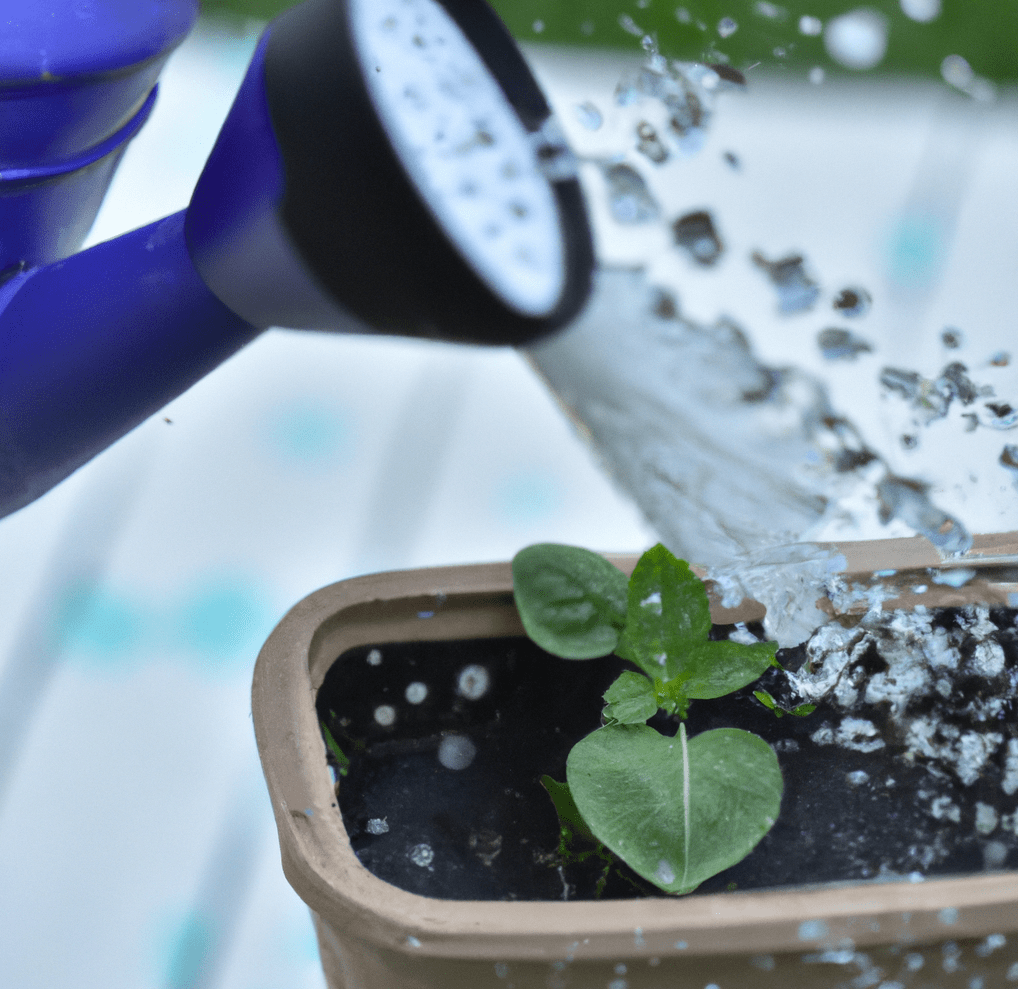
Types of Self-Watering Planters
When you’re learning about the benefits of using self-watering planters in your garden, here are the different types of self-watering planters to choose from:
- Container Gardens: If you want to cultivate plants in a small area, these self-watering pots are a perfect option. They come in a variety of sizes and forms, from tiny pots to enormous containers. Container gardens have the advantages of being portable, using less soil and water, and being simple to manage. Herbs, miniature veggies, and flowers are some of the greatest plant varieties for container gardens.
- Raised Bed: Another sort of self-watering planter that is ideal for growing plants in a small area is a raised bed. These elevated planters are constructed of plastic, metal, or wood and are placed off the ground. Raised beds have the advantages of great drainage and are less taxing on the back when gardening. Tomatoes, peppers, and root vegetables are some of the best plants for raised beds.
- Window Box: Window boxes are a great option for people who want to add some greenery to their windows and cultivate plants in a small space. They come in a variety of sizes and forms and are simple to mount on balconies or windows. The benefits of window boxes are their ease of upkeep, great drainage, and ability to grow little herbs and flowers. The best plants for window boxes include pansies, petunias, and herbs.
As you can see, the benefits of using self-watering planters in your garden can be used for different setups and spaces.
Advantages of Using Self-Watering Planters
Due to the benefits of using self-watering planters in your garden, these planters are becoming more and more popular among gardeners:
- Reduced Water Use: Self-watering planters are made to use less water by giving the plants a constant supply of moisture. This is achieved by a system of reservoirs and wicks that provide the plants with water as needed. You will need to water the plants less regularly because they are less likely to become waterlogged or dry out. This is particularly crucial in regions with scarce water supplies, where water conservation is crucial.
- Steady Flow: Self-watering planters give the plants a steady flow of moisture and nutrients, which can promote better plant growth and larger harvests. This is so that the plants can absorb the nutrients and water they require without risking over- or under-watering, which could stunt their growth. Self-watering pots can also be made to encourage strong root development, which is necessary for robust and healthy plants.
- Reduced Maintenance: Because self-watering planters do not need to be watered as regularly as traditional planters, they require less maintenance. Those who have hectic schedules or are unable to consistently water their plants will especially benefit from this. Self-watering pots can also assist avoid over- and under-watering, which can take a lot of time and effort to fix.
- Various types of gardens: Urban gardens, small gardens, and vegetable gardens are just a few of the sorts of gardens that can use self-watering planters. Self-watering pots can be used in urban gardens to grow a variety of plants on balconies, rooftops, or other constrained areas. Self-watering pots can be used in tiny gardens to make the most of the available space and accommodate a variety of plants. Many plants, like tomatoes, peppers, and cucumbers, which require regular watering to thrive, can be grown in self-watering pots in vegetable gardens.
Bottom Line: The Benefits of Using Self-Watering Planters in Your Garden
For gardeners who struggle to maintain their plants’ health and moisture levels, self-watering planters are a game-changer. The benefits of using self-watering planters in your garden include regular, even watering without the requirement for daily maintenance. These planters’ water reservoir keeps the soil continually moist, ensuring that the plants consistently get the proper amount of water. Additionally, the benefits of using self-watering planters in your garden include encouraging strong root development by giving plants access to water when they require it.
Gardeners can use these planters to cut down on the time and work needed to maintain a garden while still growing healthy and lovely plants. Additionally, self-watering planters are a fantastic method to save water and minimize water loss. In warm weather, traditional planters frequently experience water loss from evaporation, which can be troublesome in dry locations. Self-watering planters, on the other hand, aid in water conservation by acting as a barrier against water loss.
These planters’ built-in water reservoir lessens the need for frequent watering, which can be especially helpful for people who live in dry climates or have limited access to fresh water. Therefore, think about installing self-watering pots in your yard if you want to streamline your gardening process, save time, and guarantee that your plants get the water they require.
The Benefits of Using Self-Watering Planters in Your Garden FAQs
How do self-watering planters work? What are they?
Self-watering planters are gardening solutions that hydrate plants without the need for continuous manual watering by using a water reservoir and a wicking mechanism. At any time that it is necessary, the wick draws water up from the water reservoir and distributes it right to the roots of the plant. The water reservoir is situated at the bottom of the planter.
What advantages do self-watering planters in your garden offer?
Easy plant upkeep, less water waste, and flexibility in location and design are all advantages of using self-watering pots in your yard. Self-watering pots come in a variety of sizes and shapes to match different areas and are suitable for both indoor and outdoor use.
How do self-watering planters compare to more established irrigation techniques like drip?
Self-watering planters and drip irrigation both have advantages over traditional watering techniques, including less water waste, better plant health, and time savings. However, drip irrigation employs a different technique to transport water to the plant’s roots and is more efficient over wide areas.
What kinds of self-watering planters are there?
Container gardens, hanging planters, and raised beds are a few examples of self-watering planters. While hanging planters are perfect for hanging on walls or in small spaces, container gardens are suited for compact spaces and available in a range of sizes and designs. Raised beds are used to cultivate a variety of plants and are appropriate for larger gardens.


